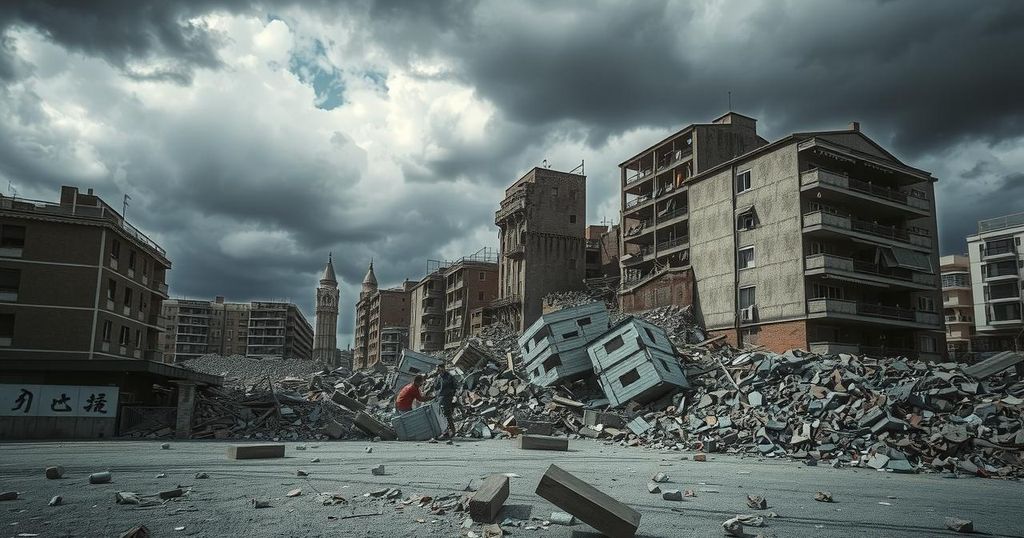Japan Warns of Megaquake: Predictions of Catastrophic Human and Economic Toll

Japan forecasts potential deaths from a megaquake at nearly 300,000, with economic losses of $2.8 trillion. The Cabinet Office’s report reveals anticipated massive tsunamis and building collapses. Meanwhile, the US dispatches aid to Myanmar following a devastating earthquake that has killed over 2,000 people, despite criticism over the pace of its humanitarian response.
The Japanese government has issued a stark warning regarding a potential “megaquake,” forecasting that almost 300,000 residents could perish and that the economy may suffer losses up to $2.8 trillion. This comes in light of the recent earthquake in Myanmar, which has already resulted in over 2,000 fatalities. The Cabinet Office’s report highlights the potential effects of a magnitude nine earthquake along the Pacific coast, estimating the economic damage at 270.3 trillion yen (approximately AU$2.88 trillion).
In addition to the staggering mortality forecast, the report anticipates waves of tsunamis, destruction from collapsed structures, and fires could lead to the evacuation of 1.23 million individuals. Compared to a previous estimate made in 2014, these numbers have been adjusted down, with estimates of potential deaths dropping from 323,000. The area of concern, the Nankai Trough, is an 800km undersea trench known for its seismic activity.
The Nankai Trough is where the Philippine Sea tectonic plate subducts beneath Japan’s continental plate, causing a buildup of seismic energy that could be released during an earthquake. Current predictions from the Cabinet Office indicate that 215,000 fatalities may result from tsunamis, 73,000 from building collapses, and 9,000 from fire. The potential for such a megaquake has been deemed to have a marginally increased likelihood, with a 75 to 82 percent chance of occurrence in the next three decades.
In August, the Japan Meteorological Agency issued its first “megaquake advisory” following a significant quake, prompting concerns among the populace and leading to shortages of essential supplies due to panic buying. Japan remains highly susceptible to earthquakes, recently trending with several major incidents including the 7.5 magnitude Noto earthquake, which caused extensive damage, over 570 deaths, and significant injuries.
In a related international context, the US announced it has sent a disaster relief team to Myanmar, where a recent earthquake’s death toll has risen above 2,000. In response, the American government allocated $2 million in support to local aid organizations. This deployment follows scrutiny over the pace of America’s humanitarian response, particularly after substantial cuts to the USAID agency by President Trump.
State Department spokeswoman Tammy Bruce reiterated that the US team’s involvement was within the broader context of humanitarian needs assessment, despite criticisms regarding the timing and effectiveness of US aid efforts. Historical precedents show that during crisis situations, the US has typically provided swift assistance, but the current crisis response appears slower. International responses have also included support from countries such as China, Russia, and India, demonstrating a collaborative effort in addressing Myanmar’s crisis.
In summary, Japan’s government has issued cautionary predictions regarding a potential megaquake, forecasting catastrophic loss of life and economic impact. The report underscores the heightened risk of seismic activity in the Nankai Trough region. Concurrently, as the US provides relief to Myanmar after a destructive earthquake, the fast-response capabilities of disaster relief efforts are under examination, especially following recent budget cuts to humanitarian programs. Continued awareness and preparedness for such natural disasters remain critical for affected regions.
Original Source: www.news.com.au







